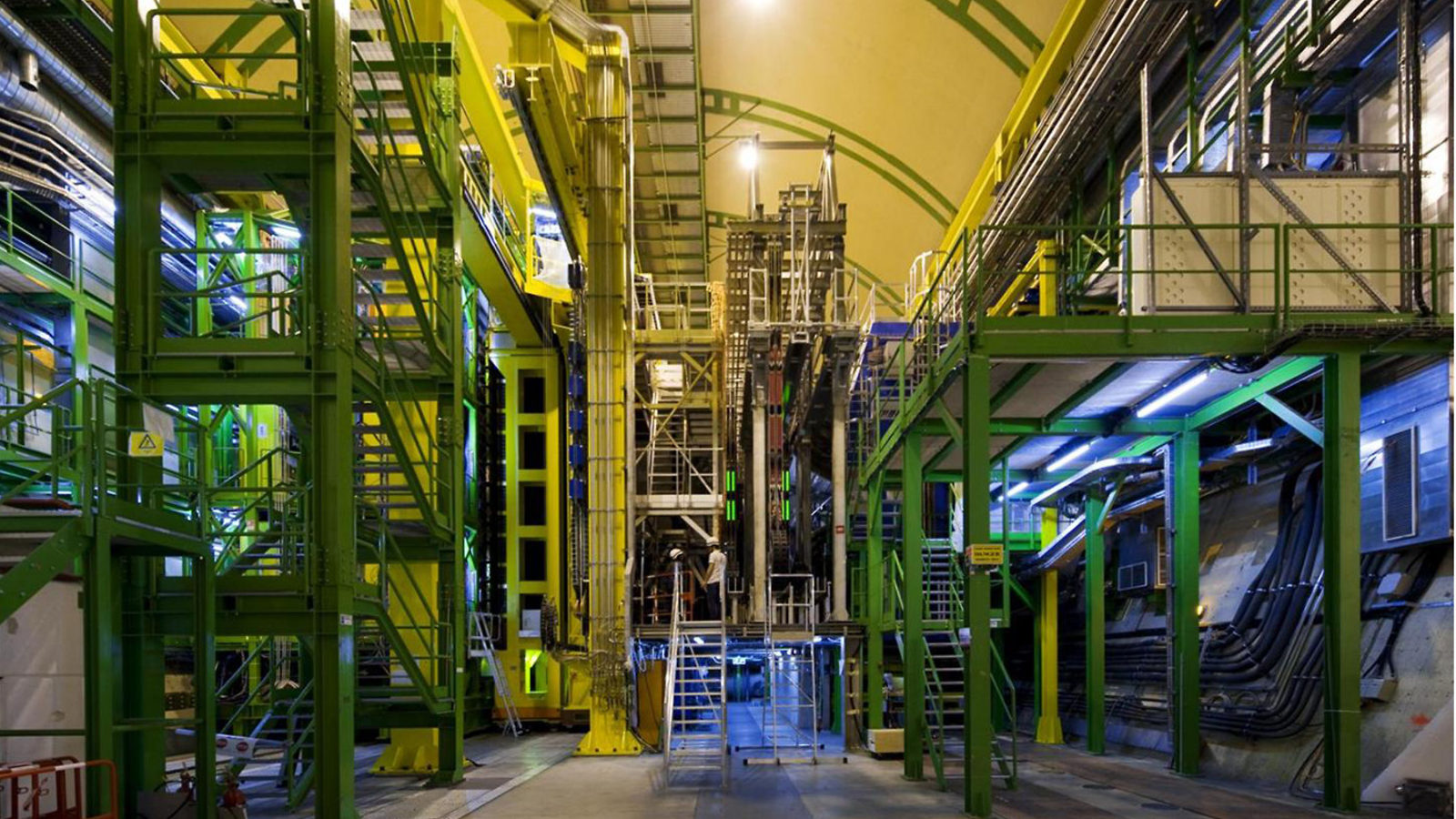This week at the LHC Physics conference in New York City, the LHCb collaboration presented a result that could be a hint of new physics.
LHCb, one of the four largest experiments at the Large Hadron Collider, is run by scientists from more than 50 institutions worldwide, including four universities in the United States. It examines the properties of certain particles to look for deviations from the Standard Model of particle physics.
The Standard Model predicts that electrons, muons and taus—all members of the lepton particle family—should behave in the same way and be produced in equal amounts in particle decays.
“The Standard Model doesn’t distinguish between muons and electrons in these decays,” says Tom Blake, a Royal Society University Research Fellow working on this analysis. “As far as our equations are concerned, they are the same particle, so we should see them produced in near equal amounts.”
In a result announced this week, LHCb scientists revealed that they have seen a hint that particles defy this Standard Model prediction. This could be caused by interference from undiscovered particles or forces.
LHCb scientists saw the difference in decays of particles containing b-quarks. Typically, these particles decay to light hadrons shortly after they are produced. But in very rare instances, they create two leptons and a hadron instead.
According to the Standard Model, this type of decay should have created an equal number of electrons and muons. Instead, they found that electrons were produced 25 percent of the time more often. If data collected in the next run of the LHC continues to support this result, it could be a sign of physics beyond the Standard Model.
“If we continue to see this discrepancy, it could be evidence of a new particle—like a heavier cousin of the Z boson—interfering with the muon production,” says Michel De Cian, a postdoc at the University of Heidelberg, who presented the result.
Previously, the Belle collaboration in Japan and the BaBar collaboration at SLAC also measured the ratio of muons to electrons produced during this decay. Both Belle and Babar found that the ratio was one-to-one, but the statistical uncertainty was so great that neither experiment was able to draw solid conclusions.
The LHCb experiment does not yet have enough data to confirm or refute whether nature follows the Standard Model’s predictions either.
“It’s interesting but inconclusive,” De Cian says. “We don’t have a large enough statistical significance to make any claims yet.”
De Cian and Blake both hope that the next run of the LHC will provide more data and will help them shed light on the dark cracks and corners of the Standard Model.



